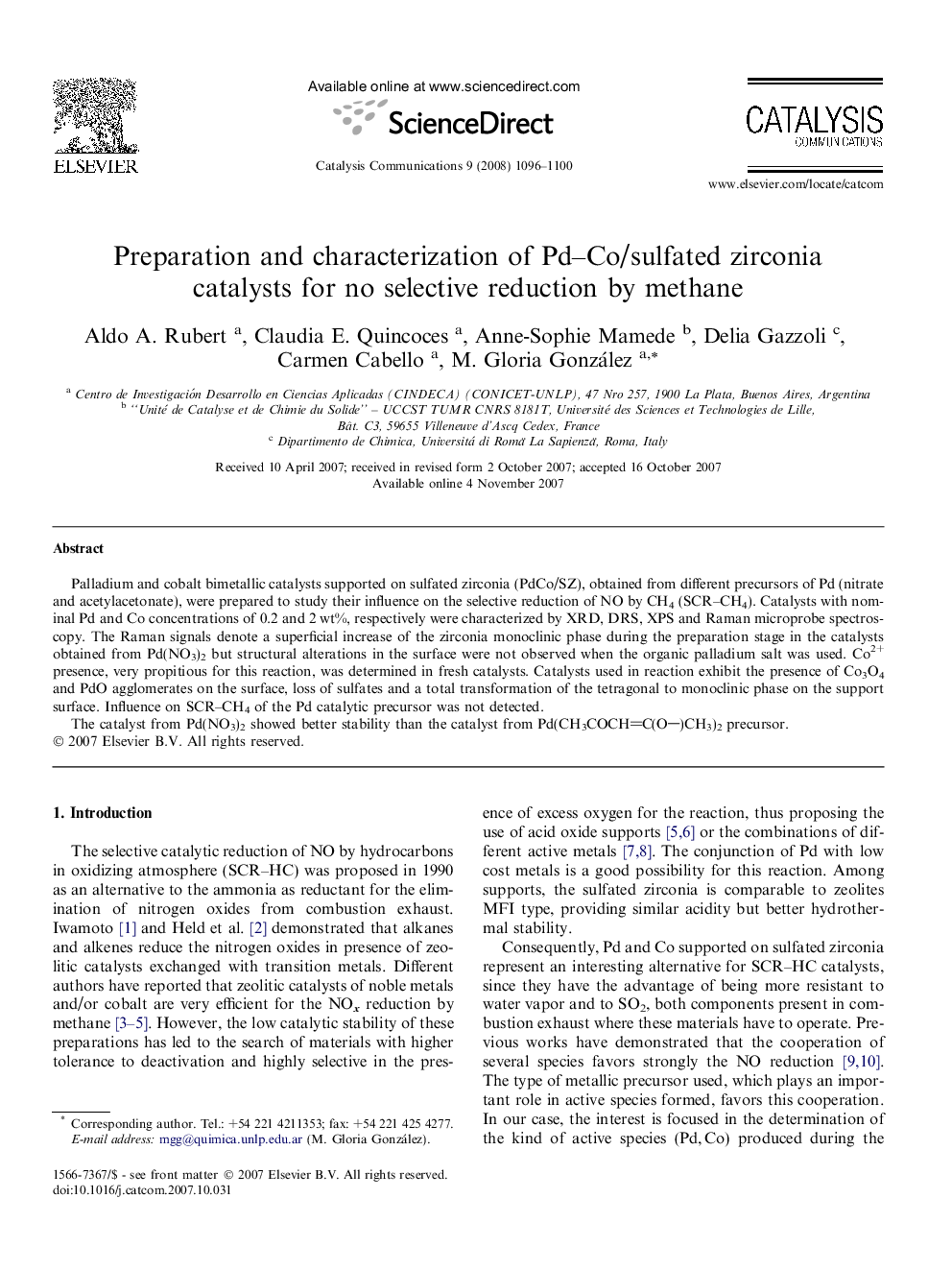| Article ID | Journal | Published Year | Pages | File Type |
|---|---|---|---|---|
| 52108 | Catalysis Communications | 2008 | 5 Pages |
Palladium and cobalt bimetallic catalysts supported on sulfated zirconia (PdCo/SZ), obtained from different precursors of Pd (nitrate and acetylacetonate), were prepared to study their influence on the selective reduction of NO by CH4 (SCR–CH4). Catalysts with nominal Pd and Co concentrations of 0.2 and 2 wt%, respectively were characterized by XRD, DRS, XPS and Raman microprobe spectroscopy. The Raman signals denote a superficial increase of the zirconia monoclinic phase during the preparation stage in the catalysts obtained from Pd(NO3)2 but structural alterations in the surface were not observed when the organic palladium salt was used. Co2+ presence, very propitious for this reaction, was determined in fresh catalysts. Catalysts used in reaction exhibit the presence of Co3O4 and PdO agglomerates on the surface, loss of sulfates and a total transformation of the tetragonal to monoclinic phase on the support surface. Influence on SCR–CH4 of the Pd catalytic precursor was not detected.The catalyst from Pd(NO3)2 showed better stability than the catalyst from Pd(CH3COCHC(O)CH3)2 precursor.
